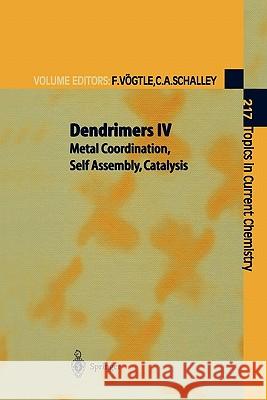Dendrimers IV: Metal Coordination, Self Assembly, Catalysis » książka
Dendrimers IV: Metal Coordination, Self Assembly, Catalysis
ISBN-13: 9783642075650 / Angielski / Miękka / 2010 / 244 str.
Dendrimers stand within the focus of quite an interdisciplinary area of research: Metallodendrimers bring inorganic chemistry into play. Organic synthesis c- tributes much to the preparation of dendrimers, which are then studied by various physicochemical methods such as small angle neutron scattering, photochemistry, and many others. The relation to macromolecules is straig- forward, but their routine use in biochemistry, e. g. , as gene transfection vectors may be less obvious. Al1 these different aspects have been combined in the Topics tetralogy in order to provide an overview as broad as possible in this fascinating field of chemistry. The fourth and final issue in the series starts with a chapter by Chow on the synthesis of dendritic oligoethers, which represent polypodands soluble in many solvents. Two contributions deal with dendrimers based on the "le- than-covalent" bond. While metal coordination as described in the review by Reinhoudt still employs rather strong bonds with bond energies close to co- lent bonds, Zimmerman's overview comprises dendrimers that self-assemble via weak forces such as hydrogen bonding. Biologic activity is one of the major topics in Lindhorst's overview of glycodendrimers, which have become a useful tool for the study of carbohydrate-protein interactions and multivalency. The article by Hirsch on fullerenes containing dendrimers provides extensive inf- mation on their properties as new materials. Finally, function again is a major topic, when catalysis (van Koten) is achieved using dendrimers.











